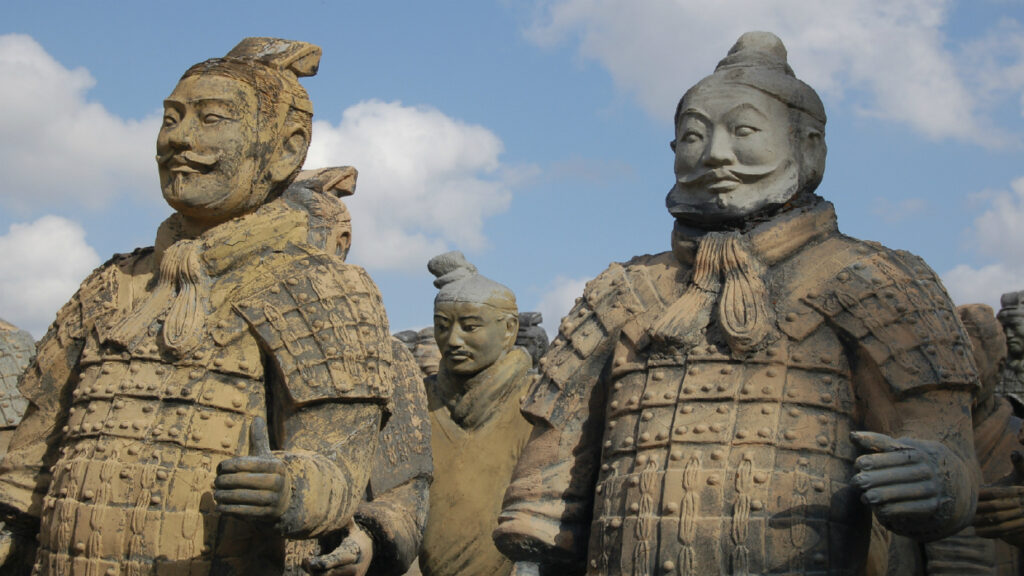In the second of our series of guides looking at what leaders from history can teach us about leadership, we look at Sun Tzu’s approaches to conflict resolution.
When did handling conflict become such an integral part of leadership? Whether managing interpersonal conflicts between employees, management disputes over strategic direction, or external disputes with stakeholders, there is no getting away from the fact that conflict resolution is a skill that every leader should have tucked firmly under their belt. Yet, whilst conflict resolution is becoming increasingly important, to see it as a skill that is exclusively the preserve of the modern leader would be short-sighted.
As early as the 6th century BC, warrior and philosopher Sun Tzu asserted that battle was always a last resort with a proclamation that true ingenuity comes in subduing without fighting, resolution through peaceful means being the preferred option and the one that epitomises effective leadership. Sun Tzu achieved much success on the battlefield, however, increasingly it is not just military strategists that are reaching for Sun Tzu’s Art of War tome for insights, but business leaders seeking advice on matters such as strategic direction and change management. Today we ask what Sun Tzu can teach us, as modern leaders, about conflict resolution.
Conflict occurs cognitively through our perception of the situation, emotionally through how we feel about it and behaviourally through actions, and it can involve one or more parties each with disparate objectives. Conflict resolution uses cognitive, emotional and behavioural skills to produce positive conflict outcomes whilst simultaneously reducing harm. Leaders must ascertain parties involved, uncover objectives, and get to the roots of the problem before a change in cognitions, feelings and actions can occur. This ties in with Sun Tzu’s decree within The Art of War that a thorough, explorative inquiry with no account neglected and no opponent underestimated, should be undertaken.
For the modern leader this would equate to not belittling the concerns of individual employees within an interpersonal dispute, or taking the concerns of a single customer on board as fully as if they were an army of irate warriors. Indeed, when we consider the power a single disgruntled consumer (or other stakeholder) can have in this age of social media, Sun Tzu’s advice is as relevant today as in ancient times.
It is said that when managing conflict, your response will generally be the result of concern for self added to concern for others, known as dual concern theory and resulting in four styles: avoiding, yielding, forcing and problem solving. Avoiders will be low on both counts and seek to downplay issues, yielders will have low concern for self and high for others thus are more likely to give in when conflict arises. Those that seek to impose their own will to end conflict (forcers) are said to have high concern for self and low for others, whilst problem solvers are high in both. Academic debate attempts to ascertain the ‘correct’ style, and ventures that the ideal may be a compromising style, the result of middling concern for both self and others.
What would Sun Tzu’s preferred style be? Apparently, the ancient leader espoused flexibility above all else, using water as a simile of his military approach, perhaps an unusual metaphor at first consideration but when we think of water as gentle at times, and powerful at others, that can flow around obstructions or submerge, it becomes extremely apposite. To manage conflicts successfully, the modern leader must be willing to vary their tactics rather than relying on a prescriptive set of techniques that may have worked in the past, or on a specific style that may come most naturally. Effective leaders must be able to manage conflict, and have a variety of techniques (or styles) at their disposal to do so.
Some of the techniques that leaders will reach for when attempting conflict resolution come through alternative dispute resolution (ADR), achieved through mediation, conciliation, adjudication, arbitration and negotiation, all tactics that Sun Tzu would almost certainly have approved of. A maxim of the leader was that when surrounding an army, an escape route should always be left. For the leader you may ask, to get away from the battle if things do not go to plan? In fact, rather the reverse, a way out for the army being surrounded. For leaders today using ADR, they can learn from Sun Tzu by ensuring that there is always an alternative path, a place for conflicted parties to retreat to, a means of saving face and grace.
And finally, for some parting lessons from Sun Tzu; planning is key: with effective use of strategy, conflict may never need to arise in the first place. Know your enemy and know yourself; understand what your default conflict resolution style is and identify when you fall into it, just because it’s the unconscious, default style for you, ask yourself if it really is the most suitable method of managing the conflict at that time. As for knowing your enemy, take the time to understand the issues at play as well as the parties who are involved. Then, let the battle commence.
In the second of our series of guides looking at what leaders from history can teach us about leadership, we look at Sun Tzu’s approaches to conflict resolution.
When did handling conflict become such an integral part of leadership? Whether managing interpersonal conflicts between employees, management disputes over strategic direction, or external disputes with stakeholders, there is no getting away from the fact that conflict resolution is a skill that every leader should have tucked firmly under their belt. Yet, whilst conflict resolution is becoming increasingly important, to see it as a skill that is exclusively the preserve of the modern leader would be short-sighted.
As early as the 6th century BC, warrior and philosopher Sun Tzu asserted that battle was always a last resort with a proclamation that true ingenuity comes in subduing without fighting, resolution through peaceful means being the preferred option and the one that epitomises effective leadership. Sun Tzu achieved much success on the battlefield, however, increasingly it is not just military strategists that are reaching for Sun Tzu’s Art of War tome for insights, but business leaders seeking advice on matters such as strategic direction and change management. Today we ask what Sun Tzu can teach us, as modern leaders, about conflict resolution.
Conflict occurs cognitively through our perception of the situation, emotionally through how we feel about it and behaviourally through actions, and it can involve one or more parties each with disparate objectives. Conflict resolution uses cognitive, emotional and behavioural skills to produce positive conflict outcomes whilst simultaneously reducing harm. Leaders must ascertain parties involved, uncover objectives, and get to the roots of the problem before a change in cognitions, feelings and actions can occur. This ties in with Sun Tzu’s decree within The Art of War that a thorough, explorative inquiry with no account neglected and no opponent underestimated, should be undertaken.
For the modern leader this would equate to not belittling the concerns of individual employees within an interpersonal dispute, or taking the concerns of a single customer on board as fully as if they were an army of irate warriors. Indeed, when we consider the power a single disgruntled consumer (or other stakeholder) can have in this age of social media, Sun Tzu’s advice is as relevant today as in ancient times.
It is said that when managing conflict, your response will generally be the result of concern for self added to concern for others, known as dual concern theory and resulting in four styles: avoiding, yielding, forcing and problem solving. Avoiders will be low on both counts and seek to downplay issues, yielders will have low concern for self and high for others thus are more likely to give in when conflict arises. Those that seek to impose their own will to end conflict (forcers) are said to have high concern for self and low for others, whilst problem solvers are high in both. Academic debate attempts to ascertain the ‘correct’ style, and ventures that the ideal may be a compromising style, the result of middling concern for both self and others.
What would Sun Tzu’s preferred style be? Apparently, the ancient leader espoused flexibility above all else, using water as a simile of his military approach, perhaps an unusual metaphor at first consideration but when we think of water as gentle at times, and powerful at others, that can flow around obstructions or submerge, it becomes extremely apposite. To manage conflicts successfully, the modern leader must be willing to vary their tactics rather than relying on a prescriptive set of techniques that may have worked in the past, or on a specific style that may come most naturally. Effective leaders must be able to manage conflict, and have a variety of techniques (or styles) at their disposal to do so.
Some of the techniques that leaders will reach for when attempting conflict resolution come through alternative dispute resolution (ADR), achieved through mediation, conciliation, adjudication, arbitration and negotiation, all tactics that Sun Tzu would almost certainly have approved of. A maxim of the leader was that when surrounding an army, an escape route should always be left. For the leader you may ask, to get away from the battle if things do not go to plan? In fact, rather the reverse, a way out for the army being surrounded. For leaders today using ADR, they can learn from Sun Tzu by ensuring that there is always an alternative path, a place for conflicted parties to retreat to, a means of saving face and grace.
And finally, for some parting lessons from Sun Tzu; planning is key: with effective use of strategy, conflict may never need to arise in the first place. Know your enemy and know yourself; understand what your default conflict resolution style is and identify when you fall into it, just because it’s the unconscious, default style for you, ask yourself if it really is the most suitable method of managing the conflict at that time. As for knowing your enemy, take the time to understand the issues at play as well as the parties who are involved. Then, let the battle commence.






One Response
Thanks for sharing Paul,
Thanks for sharing Paul, great post.
I think we can definitely learn a lot by looking back in time to great leaders of the past. Many parallels can be drawn and lessons learnt from great strategic military leaders or politicians who began a movement.
Many of the themes, both in your post and in our research, come back to the same set of fundamental traits; understanding, self-analysis, flexibility etc.
Thanks again.